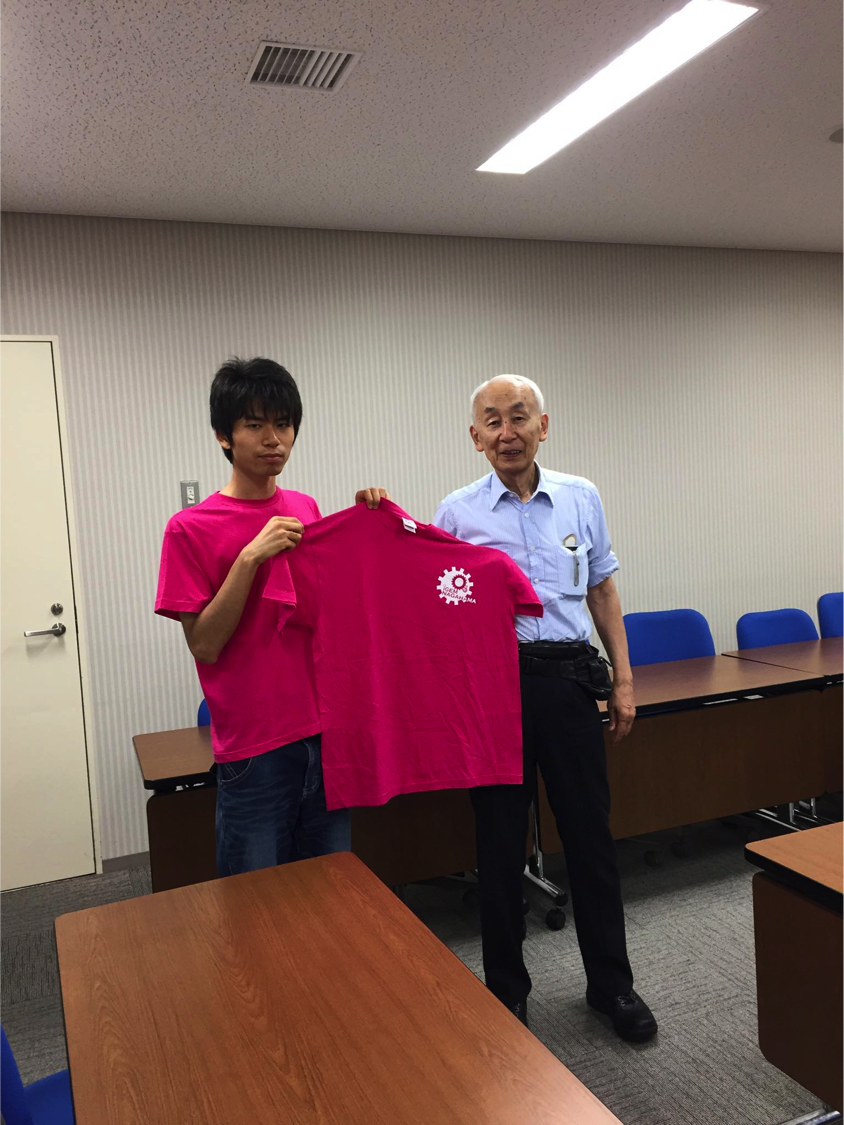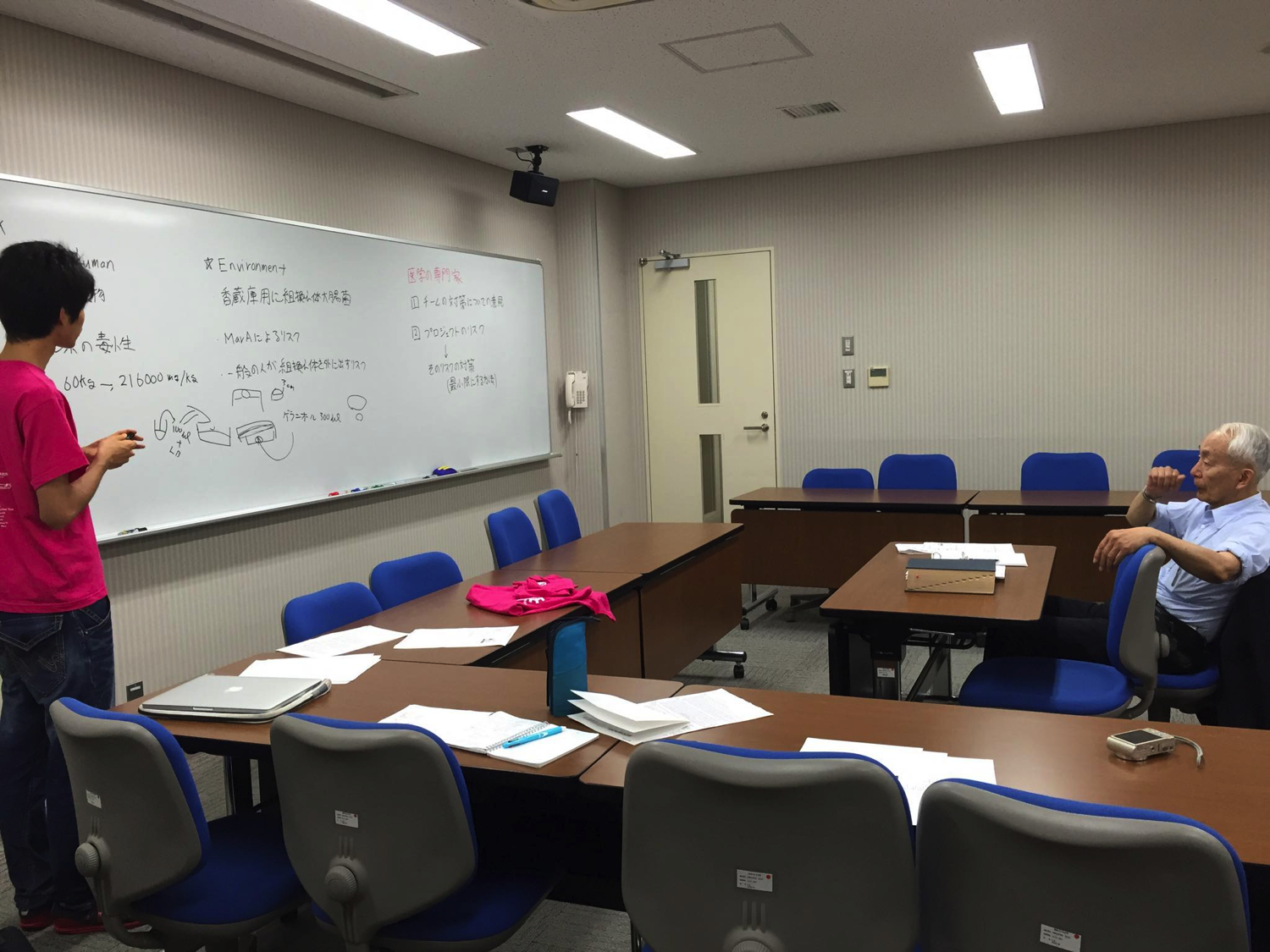Difference between revisions of "Team:Nagahama/Issues"
(→Environment) |
(→Environment) |
||
| Line 36: | Line 36: | ||
《6:宇佐美先生の意見》 | 《6:宇佐美先生の意見》 | ||
We consult with Professor usami. | We consult with Professor usami. | ||
| − | He is responsible party about the gene recombination of Nagahama Institute of Bio-Science and Technology, | + | He is responsible party about the gene recombination of Nagahama Institute of Bio-Science and Technology, and doctor of philosophy |
Advantages of the recombinant. | Advantages of the recombinant. | ||
Recombinant organism is possible to produce, the required amount of the terpene easily. | Recombinant organism is possible to produce, the required amount of the terpene easily. | ||
Revision as of 02:28, 16 September 2015
Contents
Risk Assessment
Issue
Beyond the bench-top experiments, our project contains a major question. A risk to commercialize the “Flavorator”. To address risks, we carried out the Risk Assessment of “Flavorator”. There are two risks in this project.
health of humans
The first one is the risk to the “ human health”. If you want to save the food in the “Flavorator” with genetically engineered E. coli cells, there could be a risk of E. coli to adhere to food. As it is well known that E. coli used in the recombinant experiments is harmless to human and/or animals. However, avoiding direct adhesion to the food for preservation is a wise way, if you do not want to unwanted growth of E. coli in the food. If you want to save the food in the volatile terpenoids, you may meet the risk of these terpenoids, as it shows toxic and/or cytostatic activities to the microbes. So, we need to consider the risk to human and/or animal bodies.
Solution
Experiments using human cells and/or animal cells to assess toxicities to mammalian cells must be accomplished. Animal experiments are also required, although they should be avoided and alternative experiments should be performed if they are possible. We have investigated previously published works on the toxicities of one of our candidate terpenoids. Oral administration to rats showed LD50 of 3.6g/kg body weight. If this rate is extrapolated to human without considering species difference, LD50 will be 216g/person (body weight is assumed to be 60 kg). If we put one-thousandth as a safer threshold dose, i.e., 216mg/person, this dose is quite a lot of amount, as compared with the dose working to microbes. Of course, careful considerations must be done before using geraniol for antimicrobes, if we know geraniol is used as a food additive.
Consult with medical doctor
We consult with Professor miwa.(Fig.1) He is the president of Nagahama Institute of Bio-Science and Technology, and he is medical doctor. Anything, overdose is a poison. (Etc: salt) Safety of terpene is good to think quantitatively. LD50 is quantitative thinking. Eating or taking what is known to be toxic depends on their own responsibility.(Etc: tobacco) When dealing with recombinants organisms, it is related to the discussion on GM food. To reveal the concrete impact on the human body. If you carry a recombinant organism, you must follow the recombinant traffic rules.
Environment
The second one is the risk to the "environment". Release of E. coli that synthesizes terpenoids out of the laboratory has a risk to the environment. We need to develop the container (safety box) that can reserve the engineered E. coli for a longer time with releasing the terpenoids, but with confining the cells in the container. Separable filters can be used. The gene MarA may cause a risk to the environment of increasing antibiotic resistance by increased activities of efflux pumps. Containers (safety box) confining engineered E. coli inside of the containers are required.
Solution
Terpenoids are derived from plants, meaning they are
abundant in nature.
Thus, terpenoids do not seem to evoke environmental burden, even if they are released from the “Flavorator” into the natural world by misadventure.
《6:宇佐美先生の意見》
We consult with Professor usami.
He is responsible party about the gene recombination of Nagahama Institute of Bio-Science and Technology, and doctor of philosophy
Advantages of the recombinant.
Recombinant organism is possible to produce, the required amount of the terpene easily.
Therefore, terpene continues to fill in the box.
However, disadvantages also exist.
Recombinant out of the laboratory is regulated by the rules and might be in danger if spread outside of the laboratory.
In this presentation we used E. coli as recombinant organism.
However, if it is out of the laboratory, there is a risk that would change the ecosystem of the environment.(Because of geraniol)
《7:以上のことから香蔵庫Risk Assessmentをこのように考えた》←金メダル
We concluded as follows.( In addition to the above) As a countermeasure, we replaces the bacteria and the medium directly. As method, we will replace boxes included of E. coli and medium. The container of the recombinant E. coli could be completely separated from the food by double filter system. In the future, we will use the other bacteria. There are two ways. First, such bacteria could be used, which causes no problem even if eaten by humans((Etc: Lactobacillus, Bacillus subtilis var. natto) If you choose Lactobacillus. Lactobacillus is not only good for intestine to digest foods, but also Lactobacillus can synthetize geraniol. In overseas, there is also a culture of drinking perfume to control body odor. The body odor changes by geraniol is great. However, we do experiments in model organisms. And, there is a need to make sure there is no expression of harmful genes. Second, We use bacteria that do'nt need to put a nutrient source. We use the photosynthetic bacteria. Since it can live in inorganic environment, there is no need to provide nutrients. The use of photosynthetic bacteria, which was isolated from the food, could be used in Flavorator.
We conducted consultation with experts.
Fig.1:Consultation with Professor miwa.


